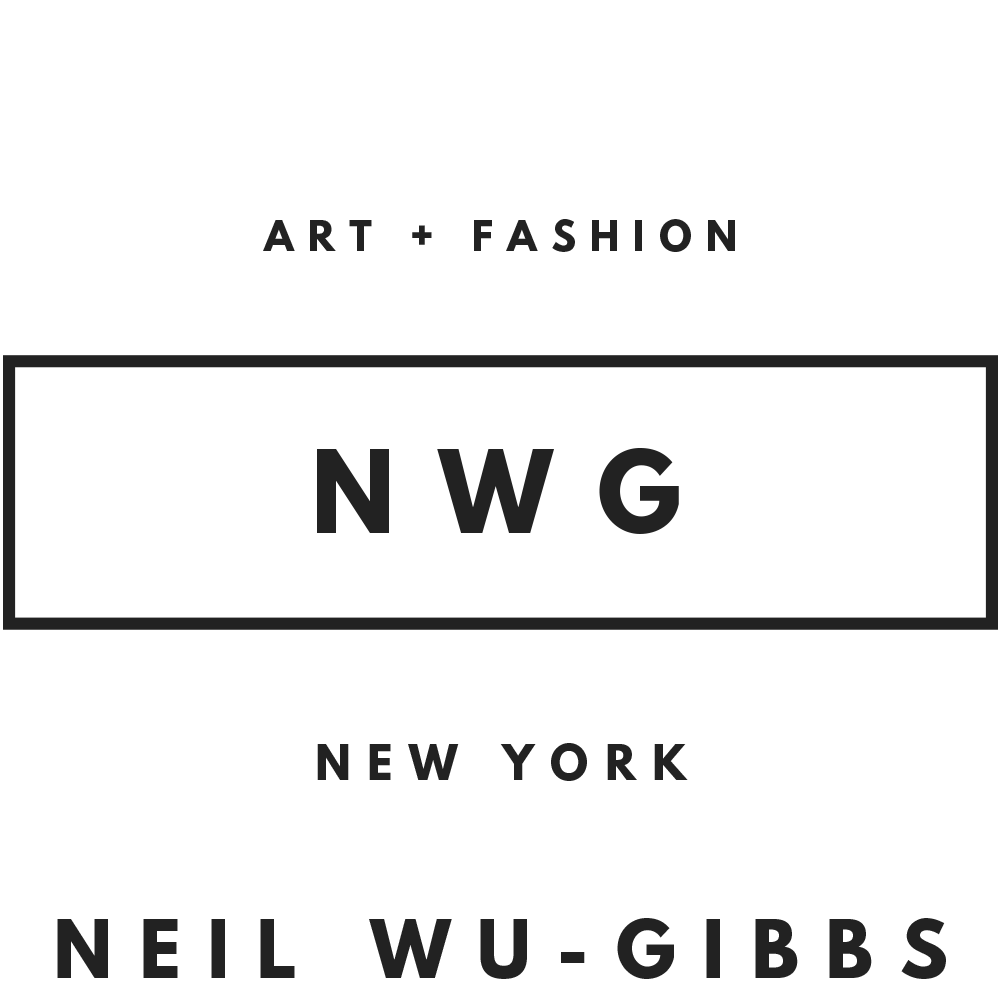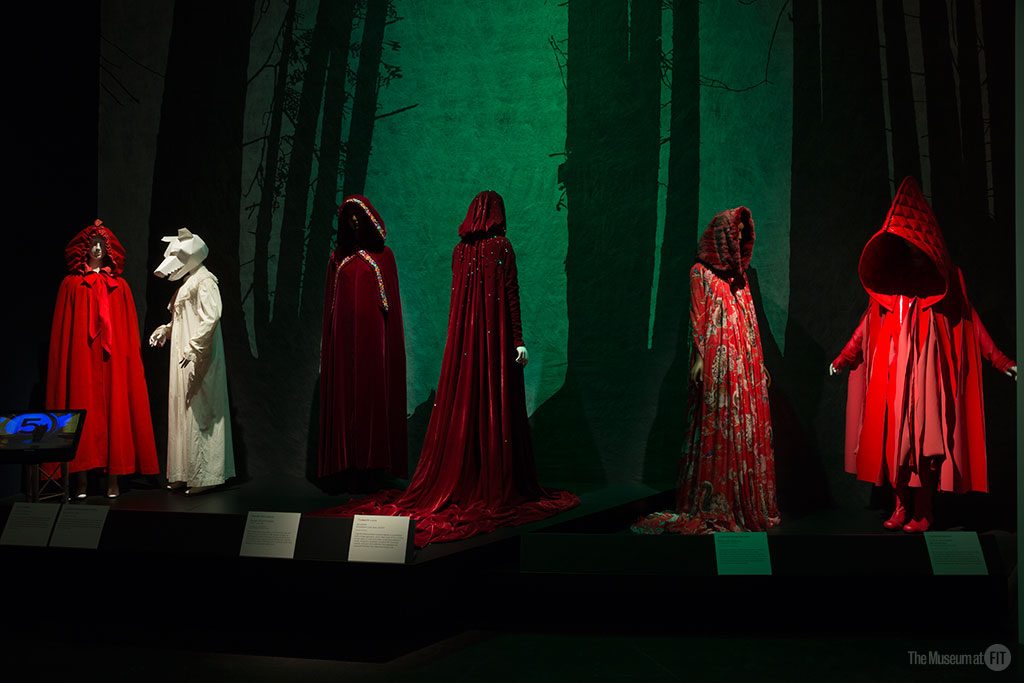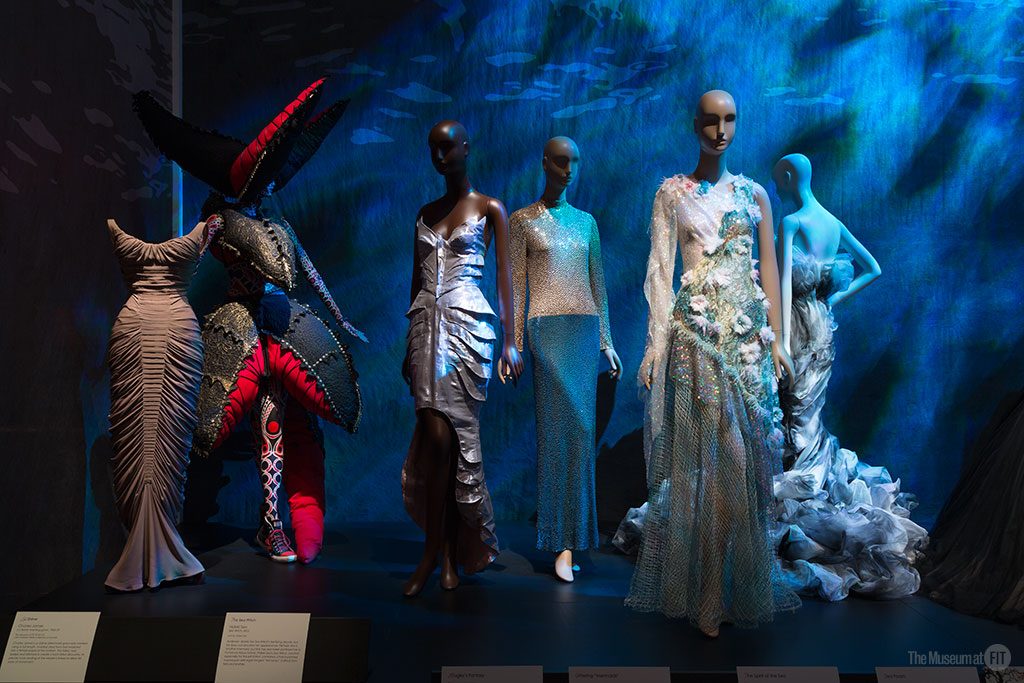Video: The Making of Fairy Tale Fashion was created by the FIT Technology Development and produced by Tamsen Young
Exhibition Dates: January 15–April 16, 2016
Exhibition Location: The Museum at Fashion Institute of Technology
Special Exhibitions Gallery
Fairy Tale Fashion was a unique and imaginative exhibition that examined fairy tales through the lens of high fashion. In versions of numerous fairy tales by authors such as Charles Perrault, the Brothers Grimm, and Hans Christian Andersen, it is evident that dress was often used to symbolize a character’s transformation, vanity, power, or privilege. The importance of Cinderella’s glass slippers is widely known, for example, yet these shoes represent only a fraction of the many references to clothing in fairy tales.
Image: Installation view of the Forest section, photo by Eileen Costa
Organized by curator Colleen Hill, Fairy Tale Fashion featured more than 80 objects placed within dramatic, fantasy-like settings designed by architect Kim Ackert. Since fairy tales are not often set in a specific time period, Fairy Tale Fashion included garments and accessories dating from the 18th century to the present. There was a particular emphasis on extraordinary 21st-century fashions by designers such as Thom Browne, Dolce and Gabbana, Tom Ford, Giles, Mary Katrantzou, Marchesa, Alexander McQueen, Rick Owens, Prada, Rodarte, and Walter Van Beirendonck, among others.
The main gallery space used fashion to illustrate 15 classic fairy tales, arranged within four archetypal settings. Visitors first walked into the Forest, which included the tales “Little Red Riding Hood,” “Snow White,” “The Fairies,” “Rapunzel,” and “Snow White and Rose Red.” Several variations of Little Red Riding Hood’s red cloak were shown, beginning with a fashionable woolen cloak from the late 18th century—the style that is used to illustrate innumerable versions of the story—and concluded with a fall 2014 Comme des Garçons ensemble with an enormous, peaked hood in scarlet patent leather. Inspired by the fairy tale–themed fall 2014 presentation by Alice + Olivia designer Stacey Bendet, Snow White was portrayed wearing a black organza gown encrusted with rhinestones while lying in her glass coffin. The subsection on “Rapunzel” included a stunning dress from Alexander McQueen’s fall 2007 collection, made from deep emerald velvet embellished with copper-colored beads that created a motif of cascading hair.
Image: Installation view of the Sea section, photo by Eileen Costa
“The Little Mermaid” and “The Swan Maidens” were explored in the Sea section of the exhibition. Charles James’s Swan dress, from the mid-1950s, has a full skirt made from alternating layers of black, beige, and brown net that form an exceptionally graceful silhouette. Undercover’s spring 2015 collection featured numerous swan-inspired designs, one of which is now in the collection of The Museum at FIT—an especially detailed ensemble comprised of a feather-printed miniskirt worn beneath a tutu hand-painted with a plumage motif. It was paired with a motorcycle-style jacket with sleeves made from laser-cut silk “feathers.” “The Little Mermaid” was represented by a variety of beautiful, mermaid-inspired gowns, including Thierry Mugler’s 1987 bustier and fishtail skirt in metallic lilac fabric, and an elaborately crafted dress embellished with pearls, sequins, feathers, and Swarovski crystals from the spring 2015 Rodarte collection.
A multi-author book, also titled Fairy Tale Fashion, was published by Yale University Press in early 2016. Featuring more than 150 beautiful photographs and illustrations, the book expands upon the rich and fascinating topic of fashion in fairy tales.
See the exhibition online.



